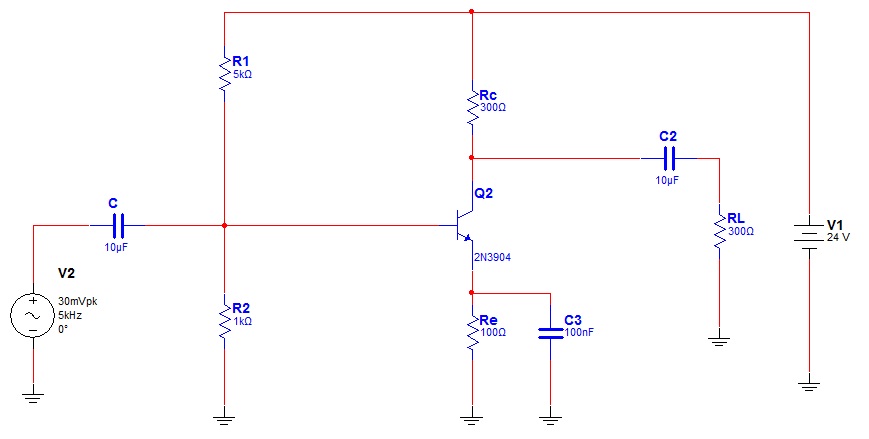Qube
Member level 5
In this schematic below..

Vdc=24V
Voltage to base by voltage divider=4 volts.
so 4-0.7=3.3
so Ve=3.3V.
The Ic=3.3/100=33mA
And as my knowledge,the Base current should 10 times more than Ib..
So
Ib=Ic/hfe..
Ic=33mA
Hfe=100 optimal
0.033/100=0.00033;
So 10*Ib=0.0033;
And now calculating the Voltage divide<<<
R1=6K
R2=1.2k
Now my doubt is how do u calculate the Rc..
please explain me how did that 300ohm resistor at the collector came..
please explain me thoroughly..please

Vdc=24V
Voltage to base by voltage divider=4 volts.
so 4-0.7=3.3
so Ve=3.3V.
The Ic=3.3/100=33mA
And as my knowledge,the Base current should 10 times more than Ib..
So
Ib=Ic/hfe..
Ic=33mA
Hfe=100 optimal
0.033/100=0.00033;
So 10*Ib=0.0033;
And now calculating the Voltage divide<<<
R1=6K
R2=1.2k
Now my doubt is how do u calculate the Rc..
please explain me how did that 300ohm resistor at the collector came..
please explain me thoroughly..please